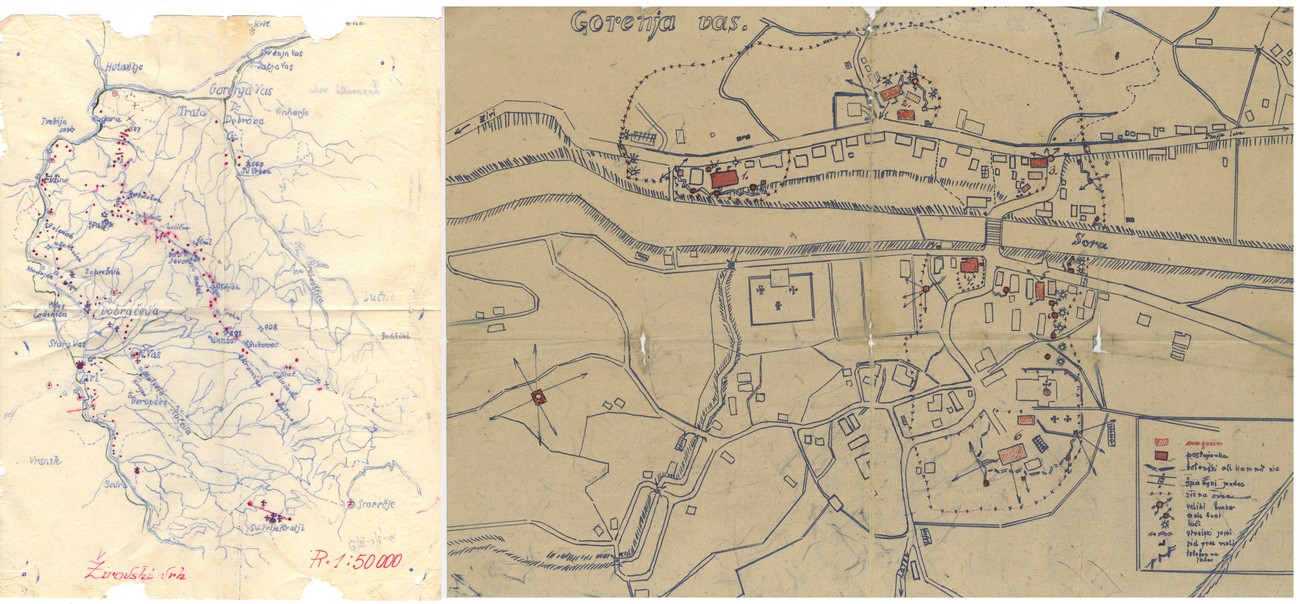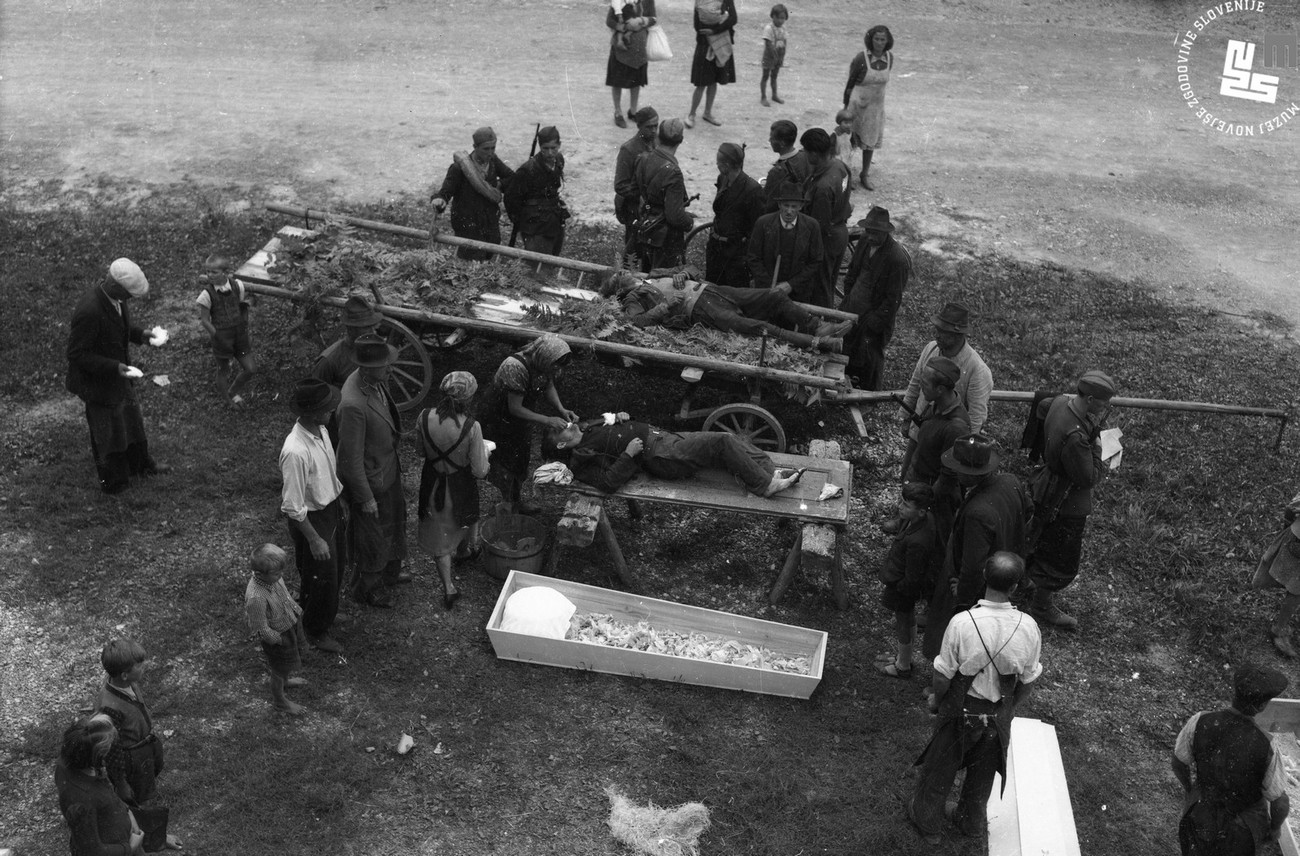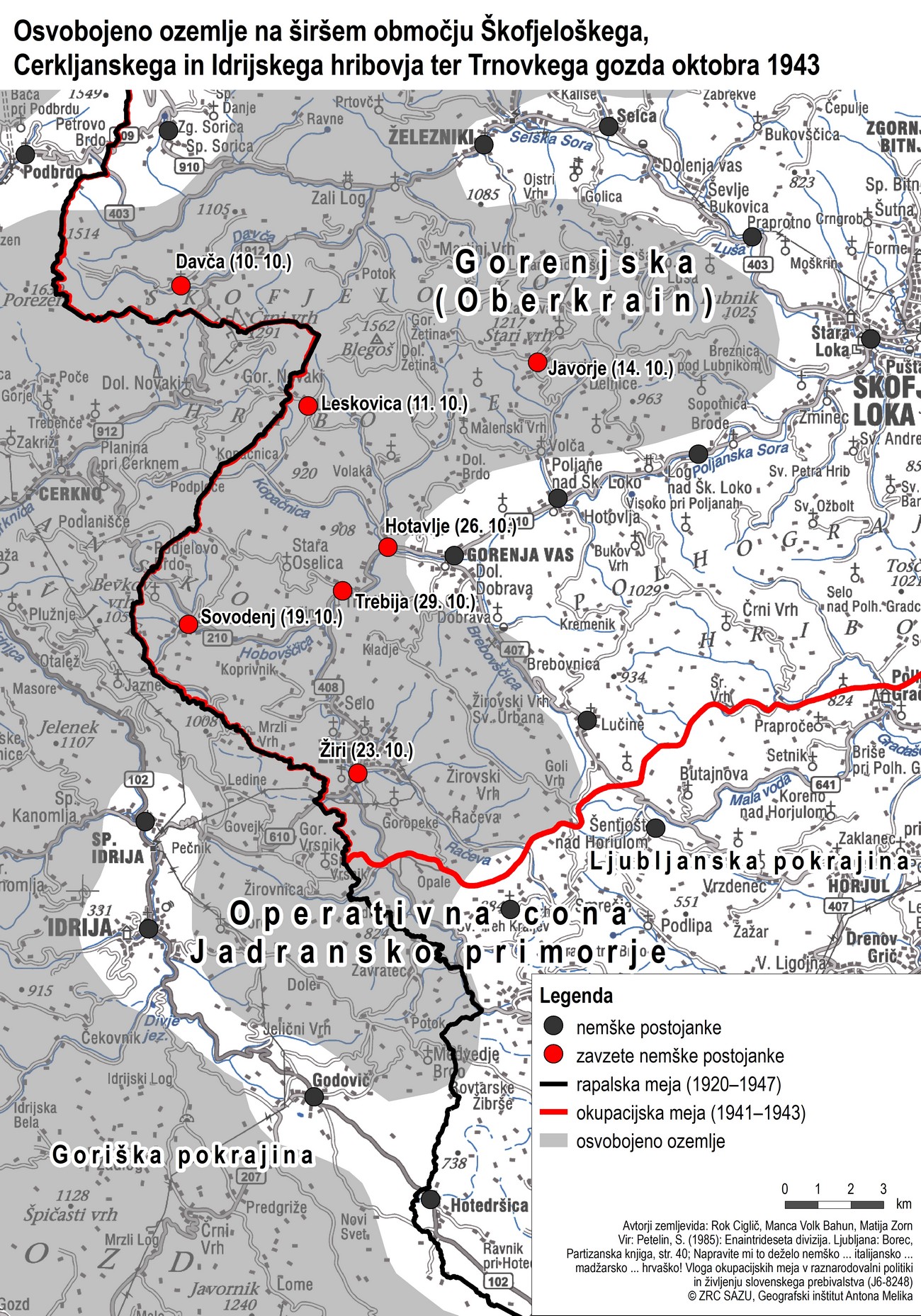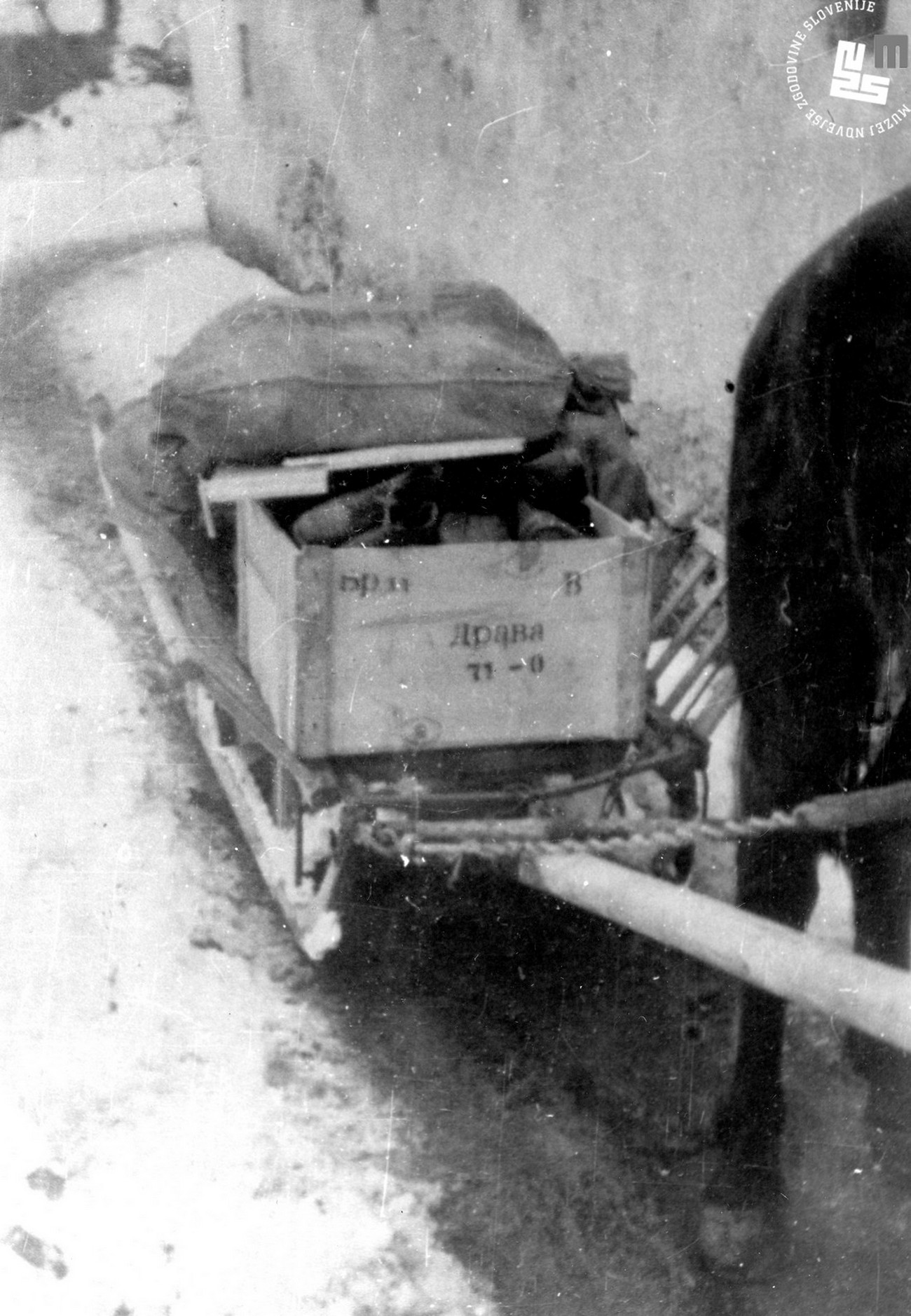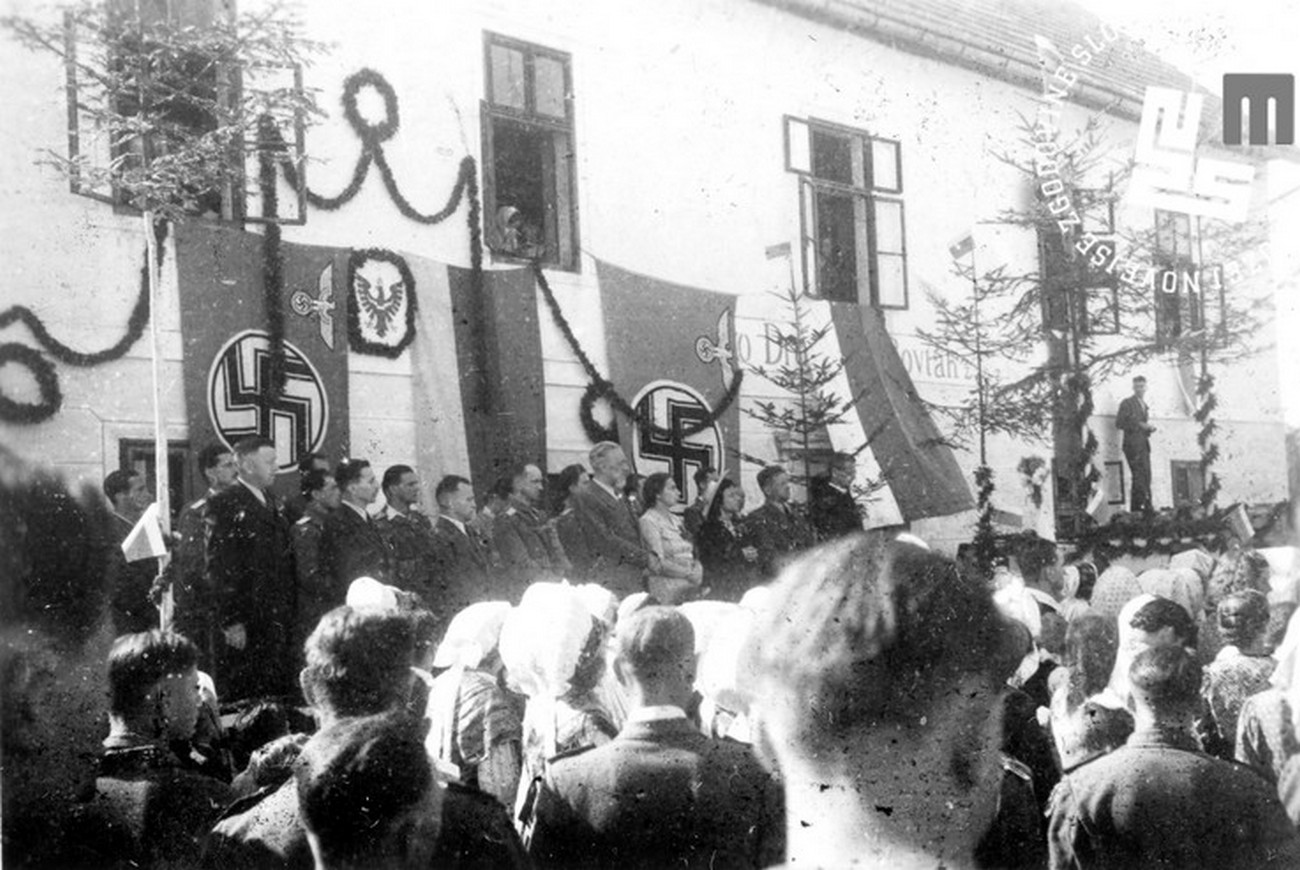It was also in Žiri that the difficult conditions and the opposition to the occupation provoked resistance on the part of the population, which led some of them to join the National Liberation Movement. The first Liberation Front (OF) Committee for Žiri was founded in September 1941. The Partisan units were then stationed in various locations in Žiri and its surrounding area. Their pressure on the German positions in the town was increasing. This led to additional fortifications of German quarters in the old and new presbyteries, as well as in Sokolski dom. On the ground floor, the Germans boarded up the windows, covered them with bags of sand, and designed hidden holes through which they could shoot. By cutting down a line of shrubbery and laying down landmines, they also protected the only road permitted for the use connecting Žiri and Škofja Loka. In order for the Germans to more easily control the population, homeowners had to fill out lists with the names of all residents of their respective buildings, and hang them on the inner side of the main entrance. When this measure also proved to be ineffective, the German commanders decided to retreat from Žiri. After a few days of armed conflict, German retreat was finally made possible on 23 October 1943 with the help of the infantry from Škofja Loka, a rapid-fire cannon, and two tanks. The Germans managed to fill 20 vehicles with footwear (over a thousand pairs of shoes) and various requisites, which they took with them.
The plundered town became part of the liberated territory. 24 October 1943 saw the establishment of the National Liberation Committee for the Municipal area of Žiri, which was the first of its kind in the region of Gorenjska. In spring of 1944, the Slovenian education system was restored. The education processes were carried out in various locations in the best possible scope. Namely, the local population was under constant pressure of the occupiers and collaborating units. The new authorities decided in February of 1944 to burn down the following public facilities: Sokolski dom, the educational building, the municipal building, the new and the old presbyteries, the school, sexton’s building, and the customs office in Osojnica. The Allied air raid in February of 1945 also contributed to the town’s demolition. Conflicts and pressures on the local population by various military units (Partisans, occupiers, and collaborators) had become part of the daily routine, due to the fact that, in its final two years, the war became completely widespread, which resulted in 312 residents of Žiri region losing their lives.
